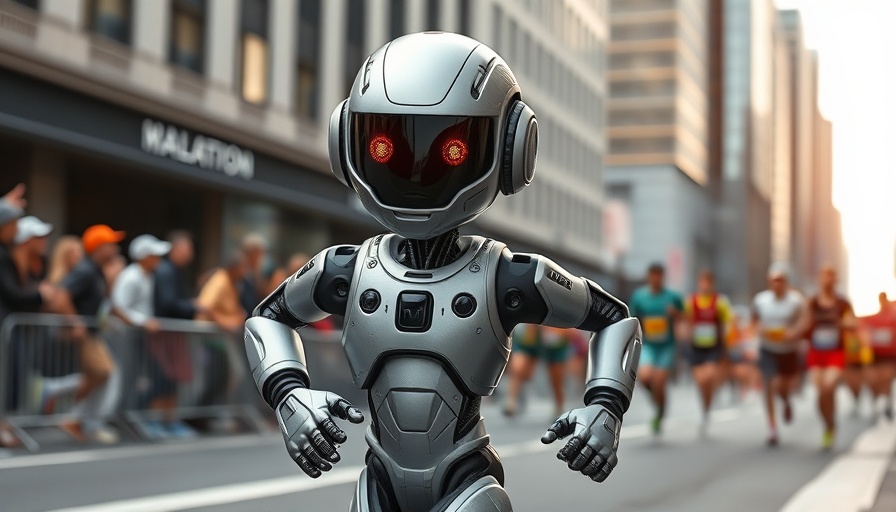
Robotic Runners Take the Stage: A Historic Moment
On April 19, 2025, Beijing witnessed a historic event as dozens of humanoid robots participated in the world's first half-marathon designed specifically for them. The city’s E-Town, known as a state-backed hub for cutting-edge technology, hosted this groundbreaking competition that aimed to explore the capabilities of bipedal robots in real-world conditions.
A Test of Limits and a Step Towards Industrialization
The race, stretching over 21 kilometers (13 miles), wasn't solely about competition. Instead, it served as a pivotal testing ground for various robotic designs and their performance. With around 20 teams from across China involved, these robots varied in height from 75 to 180 centimeters and could weigh up to 88 kilograms. Some robots were equipped to run autonomously while others were remotely guided by engineers, showcasing a blend of artificial intelligence and human oversight.
As the participants lined up, excitement filled the air. A small android stumbled at the start line but managed to get back on its feet, eliciting cheers from the audience. This kind of trial was exactly what engineers at Noetix Robotics, like 28-year-old Cui Wenhao, saw as an opportunity to boost the entire robotics industry. He stated, “Finishing the race was the main objective, rather than winning.” This focus on performance reliability sets a strong foundation for the integration of humanoid robots into daily life.
Broader Implications for Robotics and AI Development
The significance of this event extends beyond mere novelty. It highlights China’s burgeoning commitment to leading the global tech race, particularly in sectors driven by artificial intelligence and machine learning. Robotics engineers are keenly aware that these competitions will not only push the limits of technology but will also inspire innovations in AI systems that govern these robots’ functionality.
Building the Future: What’s Next for Humanoid Robots?
As technology advances, experts predict a future where humanoid robots may perform not just in races but also in factories, hospitals, and homes. The challenges of developing reliable bipedal machines—a major aspect of human-like robotics—remain, but events like the half-marathon serve as informative benchmarks for the industry, providing invaluable data on robot mobility and endurance over long distances.
Conclusion: A Visionary Leap into Robotics
This half-marathon encapsulates more than just a race; it represents humanity's quest to meld technology with real-world applications effectively. The lessons learned from such events will likely steer the trajectory of robotics research and AI development for years to come. As we marvel at these mechanical athletes, the future of humanoid robots appears brighter than ever.
 Add Row
Add Row  Add
Add 




Write A Comment